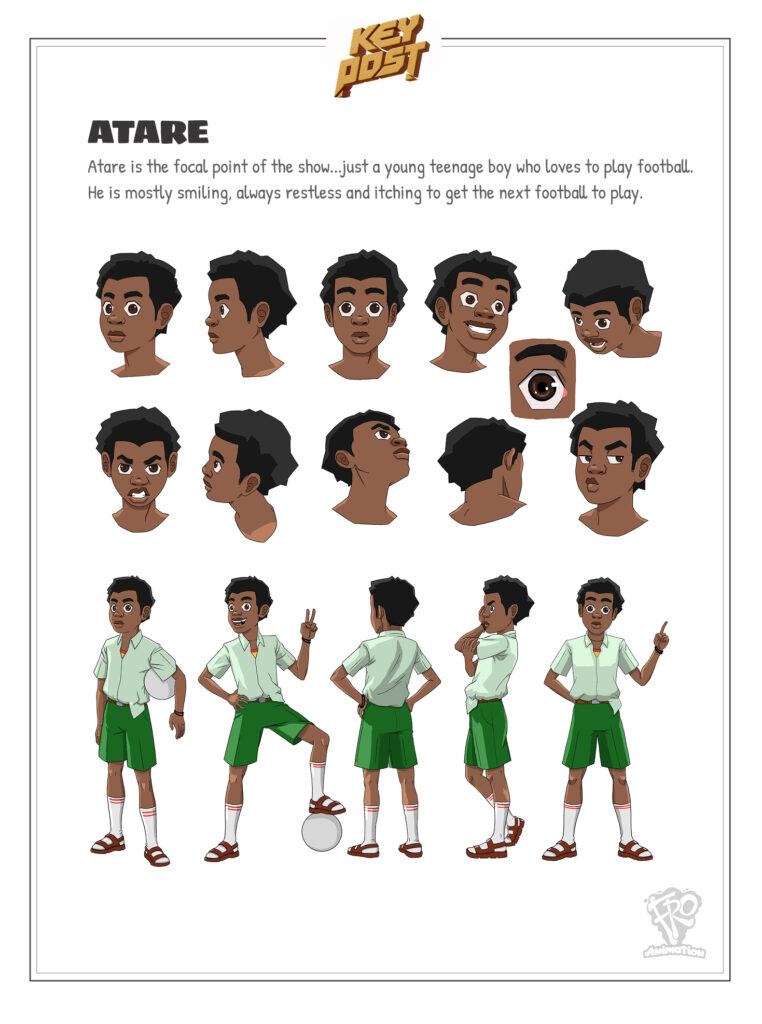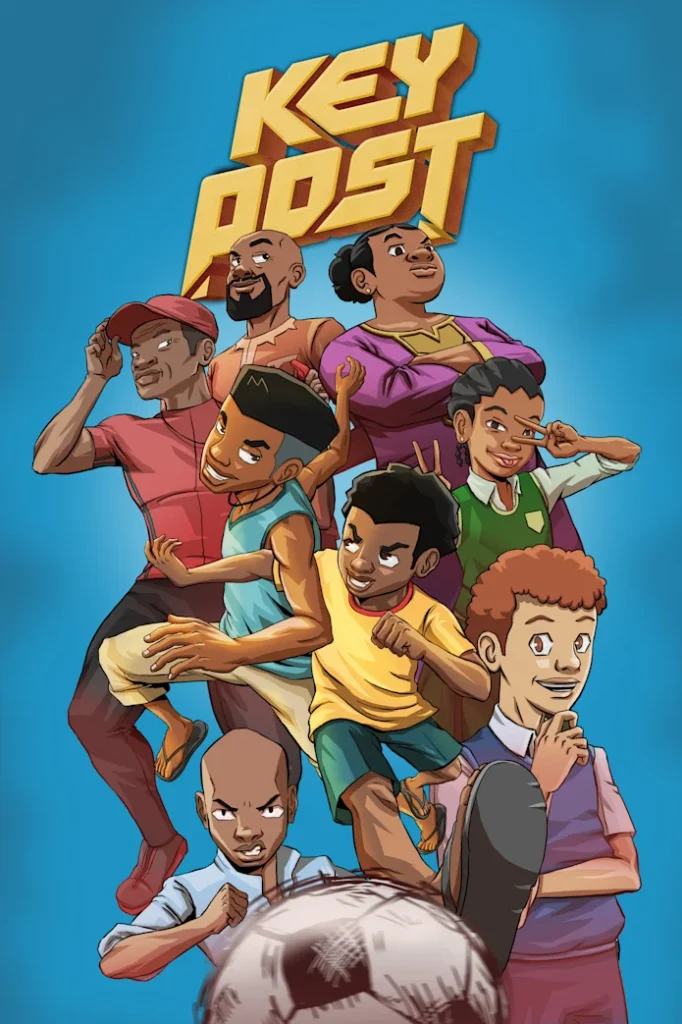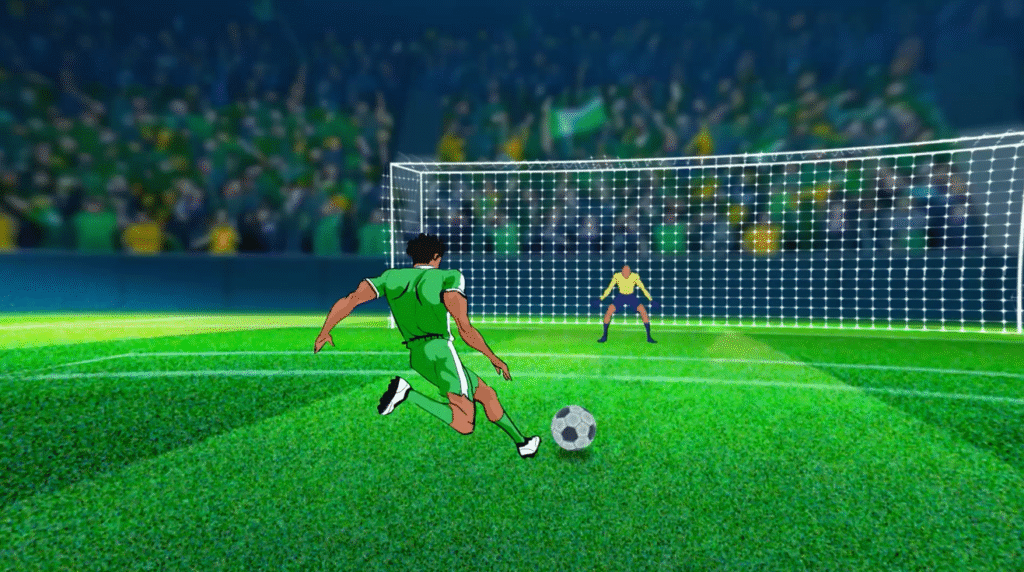After wrapping up his Indiegogo campaign and raising over $2,500 against his $25,000 flexible goal, Nigerian creator Ovie Paul reflects on what it really takes to crowdfund as an African creative. In this exclusive interview, he shares his hard-earned lessons, challenges, and honest advice for others hoping to take their ideas to a global stage.

Q: Ovie, congratulations on completing your Indiegogo campaign! Can we start with an introduction? Tell us about yourself and what inspired the project you decided to crowdfund.
Thank you! My name is Ovie Paul-Ejukorlem. I’m what you’d typically call a jack of all trades, but these days I find the most expression describing myself as a creative and strategic designer.
I’m the founder of Fro Animation, a studio focused on telling African stories through animation; co-founder of Wedeydo, a digital platform helping African creators earn more online; and a Trustee at Animation Nigeria, a non-profit working to grow the Nigerian animation industry. I’m also a second-generation artist, following in the footsteps of my dad, the renowned Paul Ejukorlem.
Our project, Key Post, is a Nigerian street football animated series set in the 1990s. It celebrates how football shaped friendships, dreams, and identity across Nigerian neighborhoods.
The inspiration came from watching kids play ball anywhere they could, turning every street into a stadium and being one of those kids myself. That energy, that aspiration, and resourcefulness…it all came out of the love for football, but also seeing the Super Eagles do great on the world stage.
I wanted to preserve that raw street football story, which reflects the backstory of many of our great footballers, and share it with the world. There are many layers to the inspiration behind the show, but this was the core.
Q: What was your strategy going into the campaign?
How did you plan to promote your project to potential backers both within Nigeria and abroad?
The main strategy was community first. We built the campaign around a simple idea: 1,000 people donating $25 each. It felt achievable and community-driven.
To reach them, we used a mix of LinkedIn, Instagram, and Twitter to share behind-the-scenes stories about the making of Key Post, while also doing a lot of direct outreach through DMs, WhatsApp, and email lists.
Internationally, we leaned on the global animation network and the Nigerian diaspora, people who understand how big this story could be for African animation.
We didn’t have a marketing budget and our team was small just two active people managing social media throughout the campaign. That limitation pushed us to focus more on storytelling and personal connection rather than paid promotion.

Q: Setting your goal at $25,000 was ambitious. How did you arrive at that number, and looking back now, do you think it was a realistic target?
The $25,000 target came from actual production estimates, not wishful thinking. It covered the cost of producing the pilot episode at professional quality including animation, voice acting, sound design, and post-production all done in good time.
Looking back, I’d say it was ambitious for where the Nigerian animation industry currently is, but it was necessary. It signalled the scale and seriousness of what we were building. I don’t think we can break into a billion-dollar industry if we’re not creative about how we fund our stories. We need to fund in ways that allow us to keep creative control and build sustainable production capacity.
That said, if I had to run it back, I’d keep the production goal the same, but set a smaller funding goal, probably around $5,000, as a more tactical first step.
Q: Social media can make or break a crowdfunding campaign. Which platforms worked best for you, and how did you use them to create buzz around your project?
LinkedIn surprised me the most. It turned out to be our strongest platform because people were genuinely supportive, especially professionals in the creative space.
Twitter (X) was quite slow at first because we didn’t have much marketing material tailored for that platform, but we started getting a few donations from there towards the tail end. Instagram helped a lot with visuals and community storytelling. Our content performed best there, and I’d say it is the sweet spot for reaching most Nigerians.
We got some love on TikTok but no conversions, a few conversions from Snapchat, and even a mention on YouTube.
The most effective platform, however, was WhatsApp. Direct reach and personal follow-ups really worked. And for the life of me, I still can’t figure out how Facebook works anymore. A lot of the campaign ended up happening through follow-up DMs instead.
All the platforms had potential to fuel the campaign fully, but a small marketing budget would have made a big difference. Organic reach takes a lot of time and energy.

Q: Every creator faces unique hurdles. What were some of the biggest challenges you encountered during the campaign, and how did you overcome them?
The biggest challenge was sustaining momentum. Crowdfunding runs on energy, and as an indie studio with a small team, it’s tough to keep the buzz alive every single day.
We also faced payment barriers. Many Nigerians wanted to donate but couldn’t because of international card restrictions. That forced us to open offline donation channels, which helped a lot.
The real test came when we didn’t meet our goal on Kickstarter and had to restart on Indiegogo. It felt like a complete reset, and the extended crowdfunding round ended up shifting our production timeline. Staying adaptable became the only way forward.
Q: Running a campaign from Nigeria comes with its own realities. Were there specific challenges or opportunities you noticed as a Nigerian creator trying to raise funds internationally?
The main challenge was trust. Not because people doubted the story, but because African creators are still proving that we can execute at global standards.
At the same time, the opportunity was massive. The world is curious about Africa right now, and animation should not be left out of that wave. There is a whole world of stories people haven’t experienced simply because we haven’t animated them yet.
Every campaign like ours pushes the door open wider for the next creator until people begin to fully understand what we are building.
There were also a lot of trust issues around payment and the process itself. Many people didn’t understand how reward-based crowdfunding works for animation. Some thought the links might be malicious, and about 80% of our supporters were first-time donors on each platform.
In the end, the platforms themselves offered little advantage. What mattered most was the direct connection with people who believed in the vision.
Q: Backers love to feel involved. How did you keep your supporters engaged and updated throughout the campaign?
We kept supporters engaged by sharing regular updates, progress notes, and small wins throughout the campaign.
Whenever we reached a milestone or completed a new part of the process, we made sure to share it visually and explain what it meant for the project.
We also highlighted the people behind the work to show that real creators were making this happen in real time.
Most importantly, we stayed personal. I personally messaged backers to thank them and kept communication open so they always knew how their support was helping. That personal connection really mattered and kept people rooting for us till the end.
Q: Presentation matters. Looking back, what elements of your campaign page visuals, video, story do you think worked best in convincing people to support you?
We didn’t have a wide range of visuals ready to show the public during the campaign, so we recycled similar ones quite a bit but made new update videos along the way.
While campaigning, what truly matters most is the story. That’s the part that connects with people, especially when you start reaching circles that don’t know you personally. I remember a complete stranger watched our campaign video and said, “That’s me. I wanted to be a footballer too.” That moment summed it up for me. The whole point is to find people who see themselves in your story, then ask them to help you make it happen.
Looking back, I also wish I had better rewards to offer supporters. Not just as an incentive to donate, but because it became clear how important it is to genuinely reward people for believing in your project at all.
Q: Let’s talk about results. You raised a little over $2,500 against your $25,000 goal. Some might call it a success others a failure. What parts of the process do you think went really well, and what would you approach differently next time?
Even though we didn’t hit the full target, we achieved something equally valuable in awareness and connection. A lot more people now know about Key Post, and that visibility opened doors to conversations, collaborations, and potential investors.
What went really well was how people responded to the story itself. The personal reach-outs and feedback made it clear that the story resonated deeply. There was a real sense of validation that people want to watch the show.
Being open with people about where the production was at each stage also helped. If I had to do it again, I would have done a crowdfunding round earlier just to learn these lessons quicker.
After running the same campaign twice, I’ve learned that every campaign is different. Timing, global events, and even holidays can affect everything.
For example, when we restarted on Indiegogo, it happened to be back-to-school season, so many people who had pledged on Kickstarter couldn’t donate right away because priorities had shifted.
I would also have used an official crowdfunding platform that supports the Naira. It would have allowed all our offline donations to be tracked publicly and would have multiplied the campaign’s momentum both locally and internationally.
That being said, my resolve would have been to campaign earlier because you can’t overthink it. Get your checklist right before you start and dive in.
Q: Finally, for other Nigerian or African creators dreaming of crowdfunding their projectS, what’s one golden piece of advice you’d give them before they click “Launch Campaign”?
My advice would be: don’t overthink it. Click “launch campaign” and figure it out as you go.
I know no one wants to fall short of their goal, but the truth is that many campaigns will. The beauty of crowdfunding is not just in the money raised, it’s in what you learn.
You get a glimpse into the future of what it will feel like to share your finished project with the world, and every day you make a decision to keep making it happen. It’s hard campaigning but finishing a creative project isn’t a joke either
It’s a test of your creation and your commitment. So if you really want to see that idea come to life, hit that launch button. I’m looking forward to your success and your lessons.
As a general caveat to everything I’ve said, I’d add this: be authentic. Crowdfunding multiplies whatever you put into it. If your intentions are clear and genuine, people will feel it and support you. But if not, you can go from creator to fraudster real quick.
Ovie’s journey is a powerful reminder that crowdfunding isn’t just about raising money, it’s about building community, testing your ideas, and finding your audience one believer at a time.
His experience on Indiegogo reflects both the challenges and the promise of being a creative entrepreneur in Africa’s growing digital economy proof that even small wins can spark big dreams.